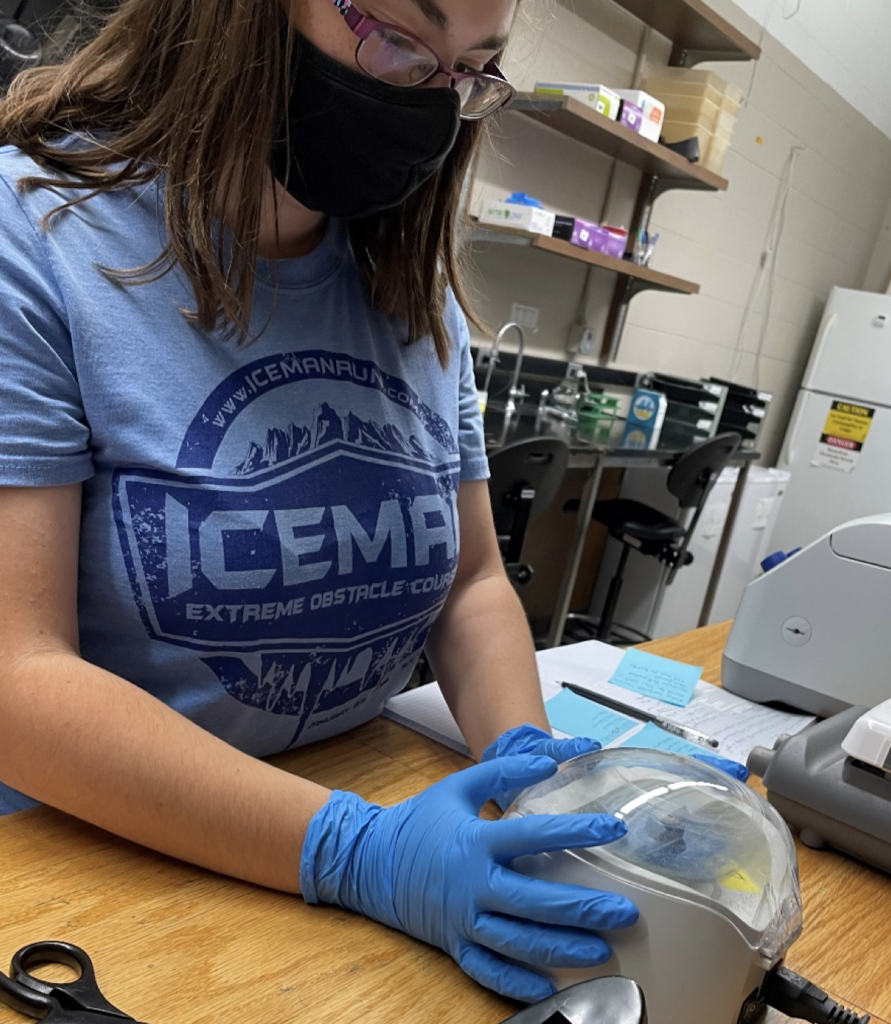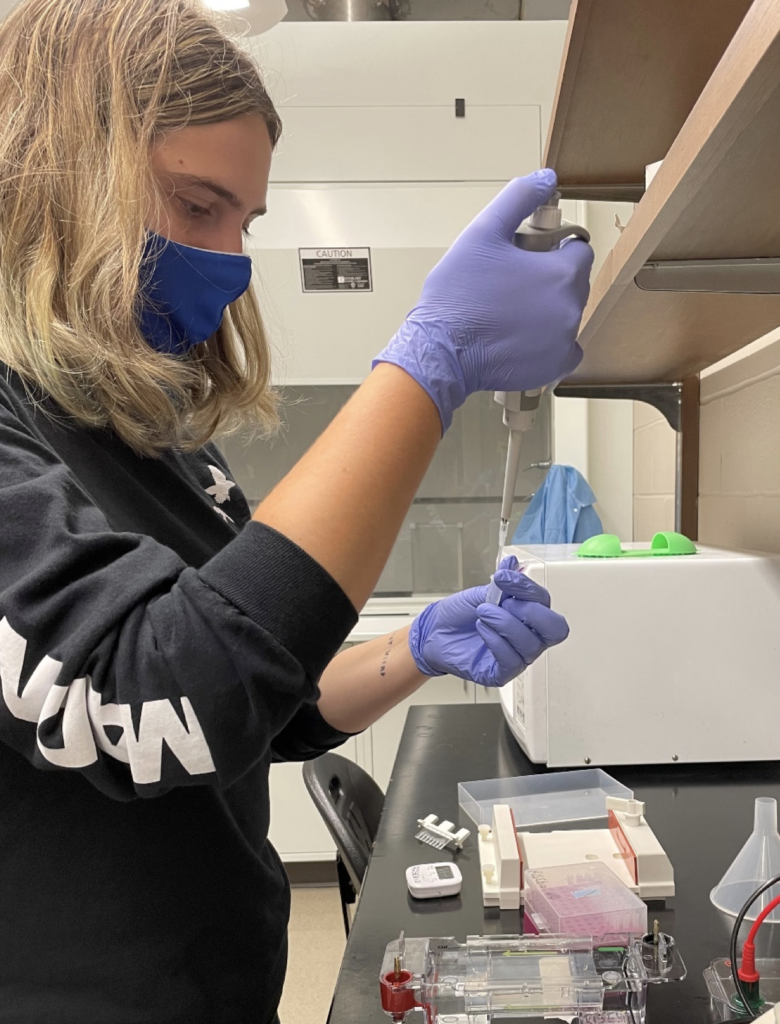September 24, 2021
Emily Schmidtbauer and Kaela Wierenga
Introduction:
Last semester, we were able to successfully insert the downstream region of our gene into the suicide vector pYT313 to generate two plasmids. We named them pSW01-3 and pSW01-6. We are continuing to investigate the function of the endonuclease encoding gene that is found in Flavobacterium psychrophilum. Now returning after the summer break, our first goal is to insert the upstream region of the endonuclease encoding gene into the plasmid we created.
Specific Content:
To start off our research, we needed to be able to insert our upstream region into our pSW01 plasmids. Before we could do that, we needed to amplify the upstream region from the genome of F. psychrophilum. We did this by running a Phusion PCR and were able to get a good result showing we had the correct annealing temperature of 52.9OC.

Figure 1: Emily is centrifuging our samples to ensure all of
our product is at the bottom of the tube to pipet out as
much of our product as possible.
We also measured the concentration of our plasmids to see which one would be best to use. From the concentrations, we decided to use the plasmid pSW01-3. Our next step was to prepare our upstream region and plasmid so they could be inserted together. To do this, we opened the sticky ends on our plasmid and upstream region with DNA digestion. We utilized the enzymes BamH1-HF and Sal1-HF to digest our upstream region and plasmid separately.
Once the digestion was complete, we purified both products to ensure we had just the products we wanted and none of the waste from the digestion. With the sticky ends open, we can insert our upstream region into the open plasmid to form a full recombinant plasmid that can be used to delete the endonuclease gene on the chromosome of F. psychrophilum.

Figure 2: Kaela is pipetting the 1kbp ladder out of the tube to load to the gel. This will help us calculate roughly the sizes of our bands on our completed agarose gel.
For our future research, it is going to be structured like the end of the Spring 2021 semester by doing a transformation, E. coli colony growth and selection, plasmid preparation, and finally a confirmation by restriction enzyme digestion. Through our future processes, we are looking to successfully insert our upstream region into our pSW01-3 plasmid to form a full deletion plasmid with both our upstream and downstream regions of the endonuclease gene.
Conclusions/Reflections:
We have had some struggles starting our research back up again and remember the procedures, but we are getting better and progressing on our research. Having a few bad gels and not seeing the results we wanted can be a bit disappointing, but to know we are still on track to do a confirmation by mid-October is encouraging. Our next steps are going to be a bit more complicated since it involves growing E. coli, but we are excited about our future research.

